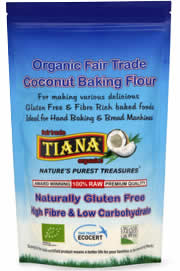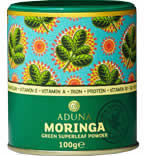7 ‘Superfoods’ to try
It seems like not a day goes by when we don’t hear about another ‘new’ superfood which is the magic bullet to becoming healthy. The truth is there is no one food, super or not which you can rely on to make you healthy. Being healthy is all about eating a varied diet and getting enough of each of the food groups and combining this with an active lifestyle. Sadly it’s hard to find genuinely healthy food at your local supermarket just because it is labelled as ‘healthy’ doesn’t mean you should buy a stack of it – many of these processed foods are lower in fat, but often this is replaced by sugar which can actually be worse for you. However being healthy is not just about your waistline, it’s important to get a good mix of nutritious foods which is why we’ve come up with a list of 7 what you might call ‘superfoods’ you might like to try.
We aren’t claiming just by eating these foods you will suddenly become healthy, but they can contribute significantly to a balanced diet to make sure you are getting all the nutrients and vitamins you need – plus most importantly they taste great!
Walnuts
 Nuts and seeds are in general are a great addition to your diet. Nuts are incredibly nutritious, being loaded with healthy fats and important nutrients like Vitamin E and magnesium. They are also a great source of plant-based protein. Walnuts in particular stand out as they have the highest antioxidant activity of all nuts.
Nuts and seeds are in general are a great addition to your diet. Nuts are incredibly nutritious, being loaded with healthy fats and important nutrients like Vitamin E and magnesium. They are also a great source of plant-based protein. Walnuts in particular stand out as they have the highest antioxidant activity of all nuts.
Perhaps one of the best things about nuts is what they can stop you from eating, who isn’t tempted by a bag of crisps every now and again? Crisps have very little nutritional value so although they may taste good, they don’t really fill you up, try replacing with some walnuts, tasty and healthy!
Coconut Flour
 Coconut has become hugely popular in the last few years, with coconut oils being used for everything from cooking to haircare. But have you tried coconut flour? Made from coconut meat that has been dried and grounded down to a powder, it’s a healthy alternative to wheat flour. What’s more if you have a gluten intolerance you’ll be please to know it is gluten free. Coconut flour contains twice the fibre wheat bran has and is relatively low in carbs and high in protein.
Coconut has become hugely popular in the last few years, with coconut oils being used for everything from cooking to haircare. But have you tried coconut flour? Made from coconut meat that has been dried and grounded down to a powder, it’s a healthy alternative to wheat flour. What’s more if you have a gluten intolerance you’ll be please to know it is gluten free. Coconut flour contains twice the fibre wheat bran has and is relatively low in carbs and high in protein.
Quinoa
Another food which has exploded in recent years is quinoa, and is perhaps the king of the current superfood craze, in fact the Incas referred to it as the “mother of all grains”. But it’s popularity does have good reason, it’s loaded with fiber, minerals and protein. Quinoa makes a great alternative to other higher carb staples such as white rice and can be eaten with virtually anything.
 Quinoa contains thousands of trace nutrients, many of which are very healthy including flavonoids, despite the name these aren’t what makes it so tasty but they do have some real benefits to health. Two of these which have been shown to have real health benefits are Kaempferol and Quercetin, which have been shown in some studies tohave anti-viral, anti-inflammatory and even andti-depressant effects.
Quinoa contains thousands of trace nutrients, many of which are very healthy including flavonoids, despite the name these aren’t what makes it so tasty but they do have some real benefits to health. Two of these which have been shown to have real health benefits are Kaempferol and Quercetin, which have been shown in some studies tohave anti-viral, anti-inflammatory and even andti-depressant effects.
But that’s not all it contains, it’s high in magnesium, zinc, iron and potassium, all of which tend to be lacking in modern diets. And this is as well as being full of antioxidants which neutralise free radicals and are believed to help fight ageing.
Every good staple food has to fill you up, this is where quinoa excels, being both high in fibre which aids digestion and increases ‘fullness’ and protein, which is needed to build muscle. It’s also really simple to add to your diet and can be cooked in just 15-20 minutes.
Kale
 Kale is member of the cabbage family, related to cruciferous vegetables such as broccoli, cauliflower and sprouts. Like many of these it is high in antioxidants and like quinoa above contains the flavonoids kaempferol and quercetin. Kale is also one of the best sources of Vitamin C (4.5 times as much as spinach) and also Vitamin K which is involved in blood clotting.
Kale is member of the cabbage family, related to cruciferous vegetables such as broccoli, cauliflower and sprouts. Like many of these it is high in antioxidants and like quinoa above contains the flavonoids kaempferol and quercetin. Kale is also one of the best sources of Vitamin C (4.5 times as much as spinach) and also Vitamin K which is involved in blood clotting.
Like quinoa it is a good source of certain minerals which are often deficient in the modern diet such as magnesium, potassium and calcium.
Kale can be eaten either as a side vegetable with your meal or as a tasty snack alternative to the dreaded crisps!
Baobab Powder
 This is probably one you’ve never heard of, it’s a nutrient-dense raw wholefood from the Baobab tree commonly known as the ‘Tree of Life’. The Adansonia tree is commonly known as the baobab tree and can be found in many parts of Africa.
This is probably one you’ve never heard of, it’s a nutrient-dense raw wholefood from the Baobab tree commonly known as the ‘Tree of Life’. The Adansonia tree is commonly known as the baobab tree and can be found in many parts of Africa.
The actual fruit is about the size of a coconut but with a slightly harder shell, inside is a dry sticky powder which can easily be added to cereal bars, smoothies or drinks. This powder can have six times more vitamin C than oranges, more potassium than bananas, twice the calcium of milk and more antioxidants than blueberries, so it packs quite a punch!
Read more about Baobab and it’s benefits
Moringa
 Another one you may not have heard of, this is also derived from a tree, the leaves of the moringa tree.
Another one you may not have heard of, this is also derived from a tree, the leaves of the moringa tree.
The powder is a fantastic source of essential vitamins and minerals, relatively protein-dense and is said to regulate blood pressure, support gut health, enhance immunity and combat fatigue. Moringa also has the effect of lowering blood sugar levels which can be a serious health problem. But it’s not only blood sugar levels it can lower, moringa has been shown to lower cholesterol which has been linked to an increased risk of heart disease. Many other plant foods such as flaxseeds, oats and almonds can also reduce cholesterol but the beauty of moringa is that with it being a powder you can add it to all sorts of foods and drinks and get the same benefit.
Beetroot Juice
 This one’s an old favourite of ours being one of the first online stores to sell beetroot juice. Beetroot juice is hugely popular with professional athletes but also people who are involved in sports just for fun.
This one’s an old favourite of ours being one of the first online stores to sell beetroot juice. Beetroot juice is hugely popular with professional athletes but also people who are involved in sports just for fun.
Beetroot juice had been known for a long time to lower blood pressure which can damage blood vessels and the heart but in recent years there has been a real take up of beetroot juice to improve sporting performance. The nitrates in beetroot juice have been shown to improve oxygen use and lead to a better exercise performance. The drink itself may not be to everyone’s taste so if you do struggle with it James White now produce concentrated shots which are the equivalent of 400ml of beetroot juice.
Find out more about beetroot juice being used in sports

